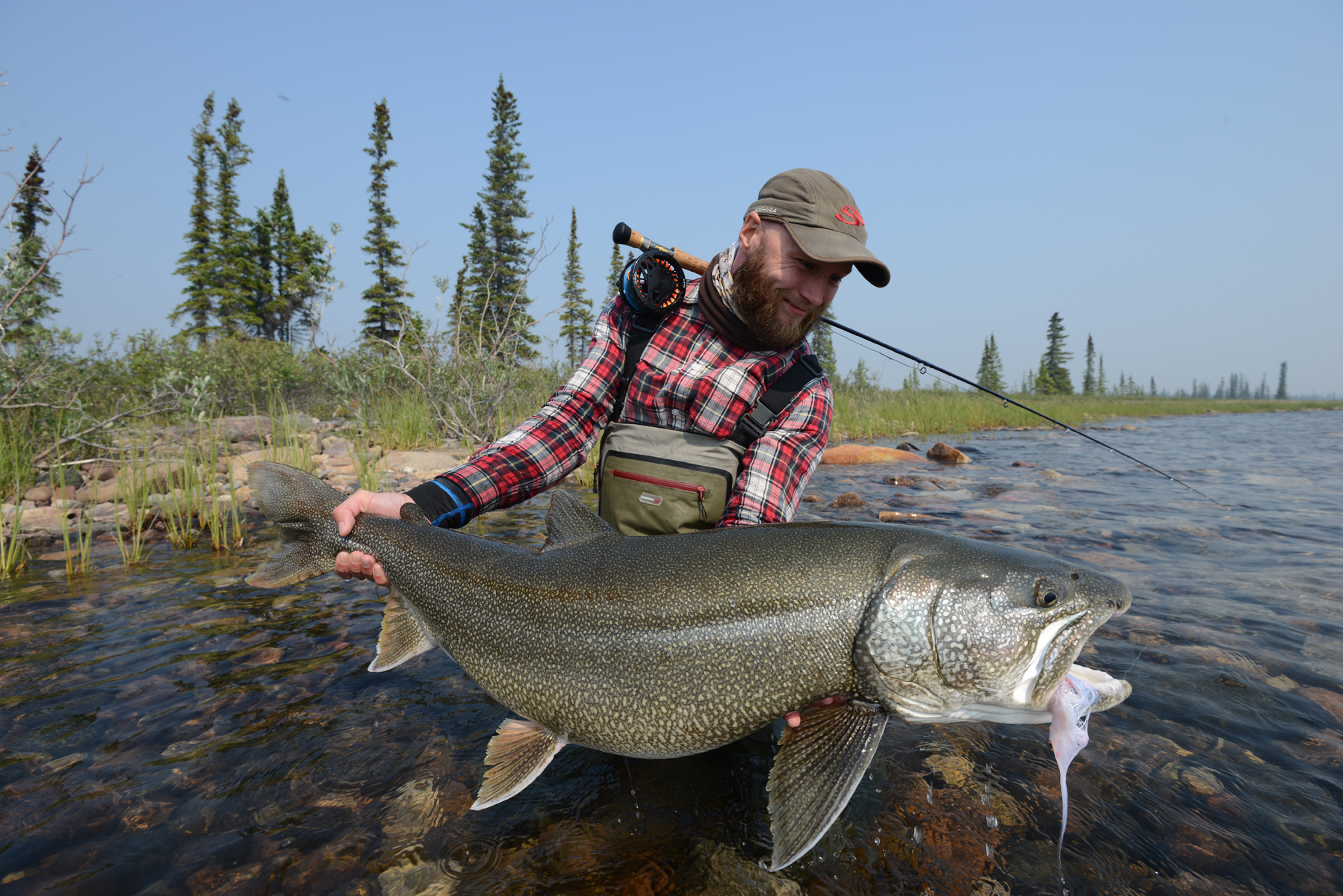Great Bear Lake
Want to catch world-record lake char on one of the most remote lakes on the planet?
When we fished Great Bear Lake, we caught pristine lake char in excess of 15 kilos. These fish are dogged fighters that hit flies with cruel intentions. But there is more to Great Bear Lake than just the lake char…
Great Bear Lake is the world’s fourth biggest lake – a massive freshwater reservoir with a water table of 31.153km2 and water depths of up to 446m. It is situated in the central part of Canada’s vast Northwest Territories, which borders on the Arctic Ocean to the North. 15 different species of fish inhabit the lake including lake char, grayling, pike, and whitefish.
Plummer’s Arctic Lodges manage the fishing on the lake, which – throughout the years, has produced one record-breaking lake char after the other: Among them the standing world record of 72lbs. In total, there are three lodges on Great Bear Lake (Trophy, Great Bear, and Arctic Circle), which are all run by the Plummer’s staff with different fishing options.
Lake Char
LAKE CHAR (Salvelinus Namaycush) belong to the char family, which also counts brook trout, arctic char, and bull trout. To thrive, it requires clean, cool and well-oxygenated water in combination with a solid prey biomass. However, when these conditions are met, it can grow up to 70 years old.
In terms of geographic distribution, the lake char is endemically distributed across the northeastern parts of USA and across all of Canada. In Great Bear Lake there are three distinct lake char sub-species: silverbacks, red fins and butterfly red fins. Silverbacks are pelagic lake char with a silvery grey gleam and a relatively big head and mouth. They primarily live off of prey fish such as grayling, whitefish, pike and even relatives. As a result of their piscivorous inclinations, they tend to grow big – and they have been known to reach weights up to a 100lbs.
Redfins display saturated olive-green flanks and bright red fins. They don’t grow as big as the silverbacks – probably not bigger than 30lbs, and they primarily live off of small baitfish, gammarus, caddis and other aquatic insects. In terms of colorations, the butterfly red fins are quite similar to ordinary red fins, but they differ physiologically. They display oversized fins, a notable overbite and plump lips. These fish rarely exceed 15lbs, and they are typically found in relatively shallow water, where they specialize in insect-based bottom feeding.
The Gear
You’ll need 9′ 10-weights in combination with sinking lines to target the lake char. They’re found along drop offs and pelagically in deeper water, so getting deep is needed. Flies should imitate grayling and whitefish – and they need to be big! The bigger the better.
Also bring along a 9′ #4, a floating line, and some caddis, midge, and mayfly patterns – or some nymphs. There a big Arctic grayling in the lake, and they’re fun to target on windless days. Sometimes, the smaller lake char will also be feeding on dries, and you don’t want to miss that opportunity.

BOOKING INQUIRY
*Disclaimer: In the Loop Magazine is in no way liable for the execution of trips booked via our contact form. In the
Loop Magazine merely liaises and forwards information requests.
All bookings and related services are handled by the actual lodges and guide agencies.














